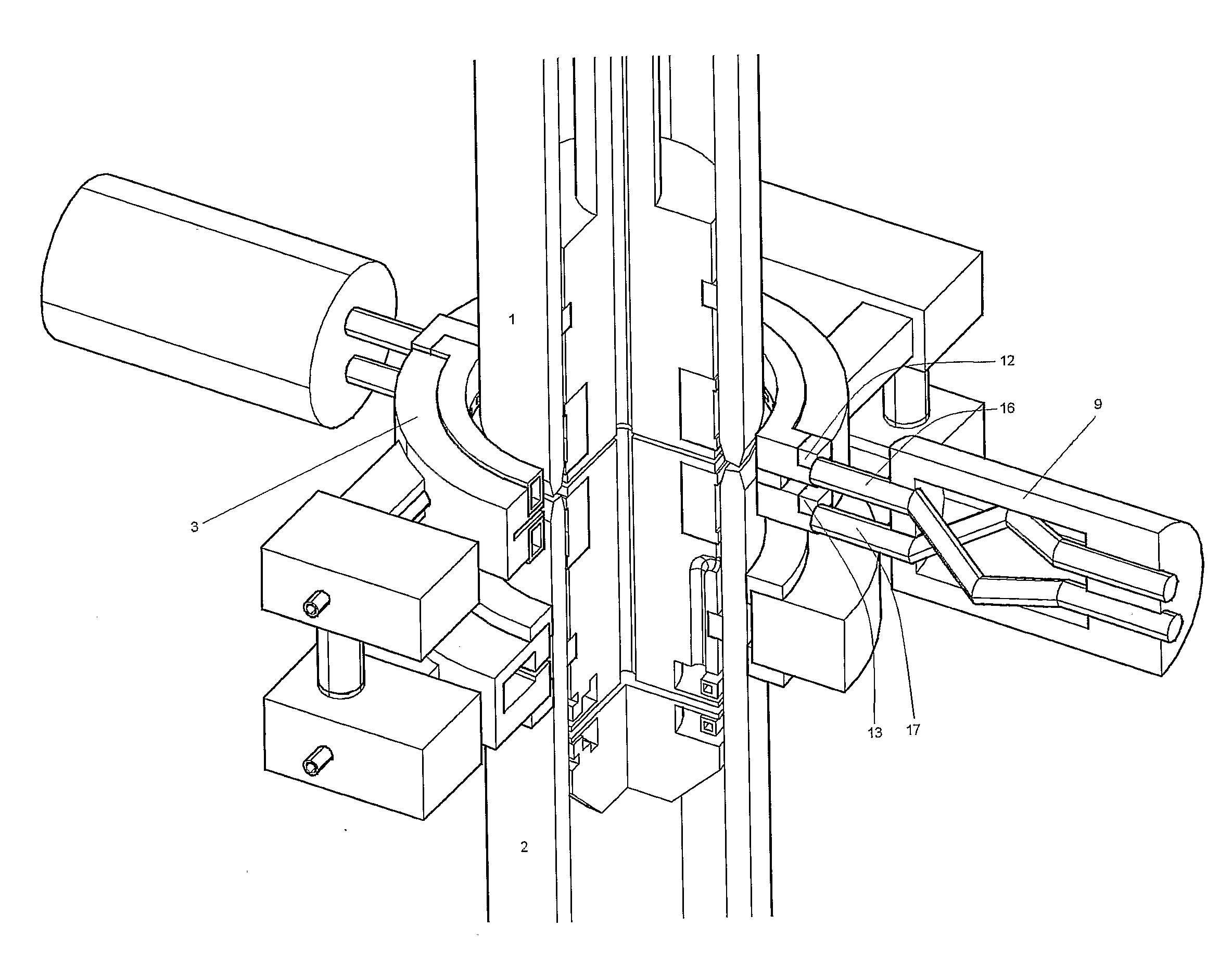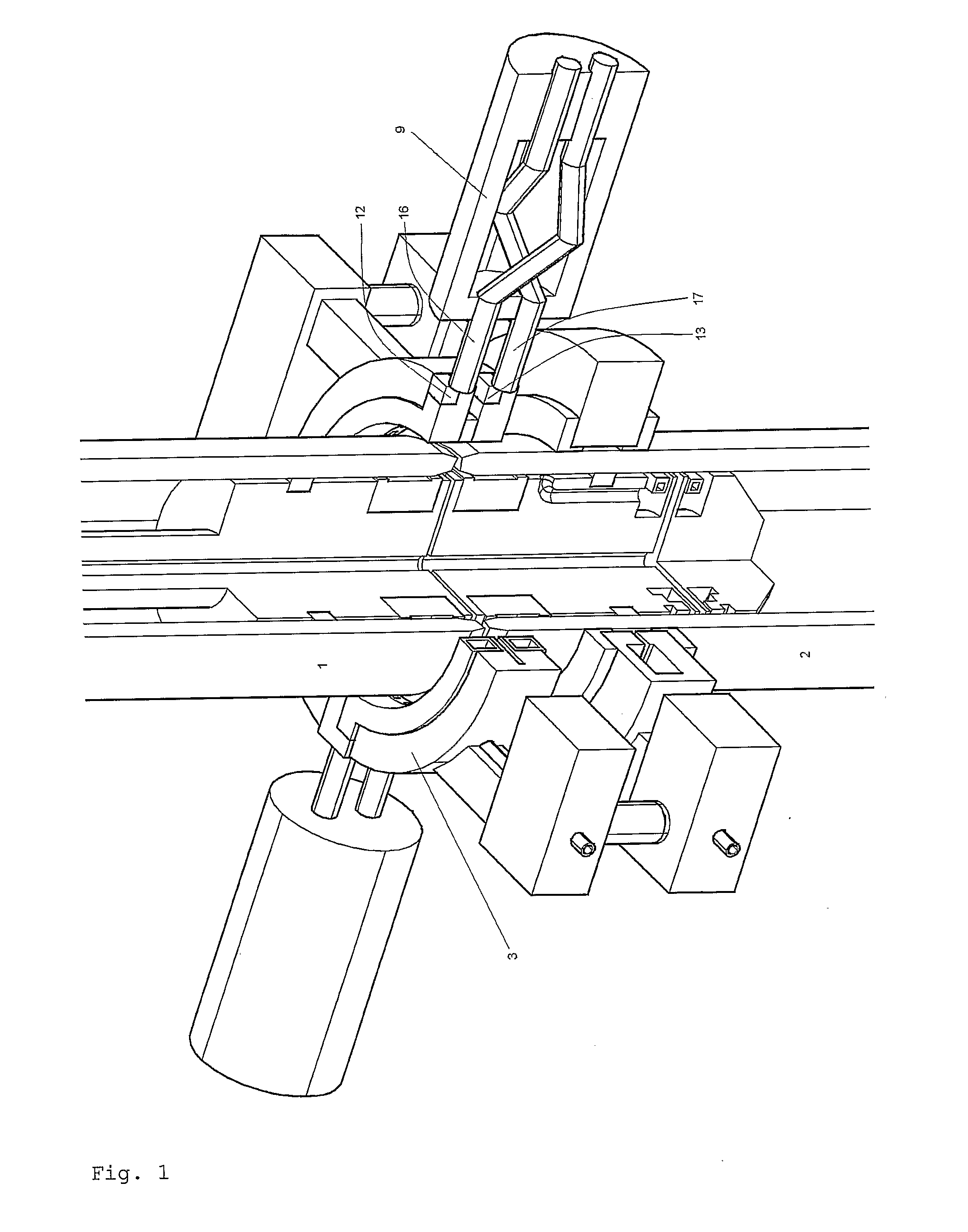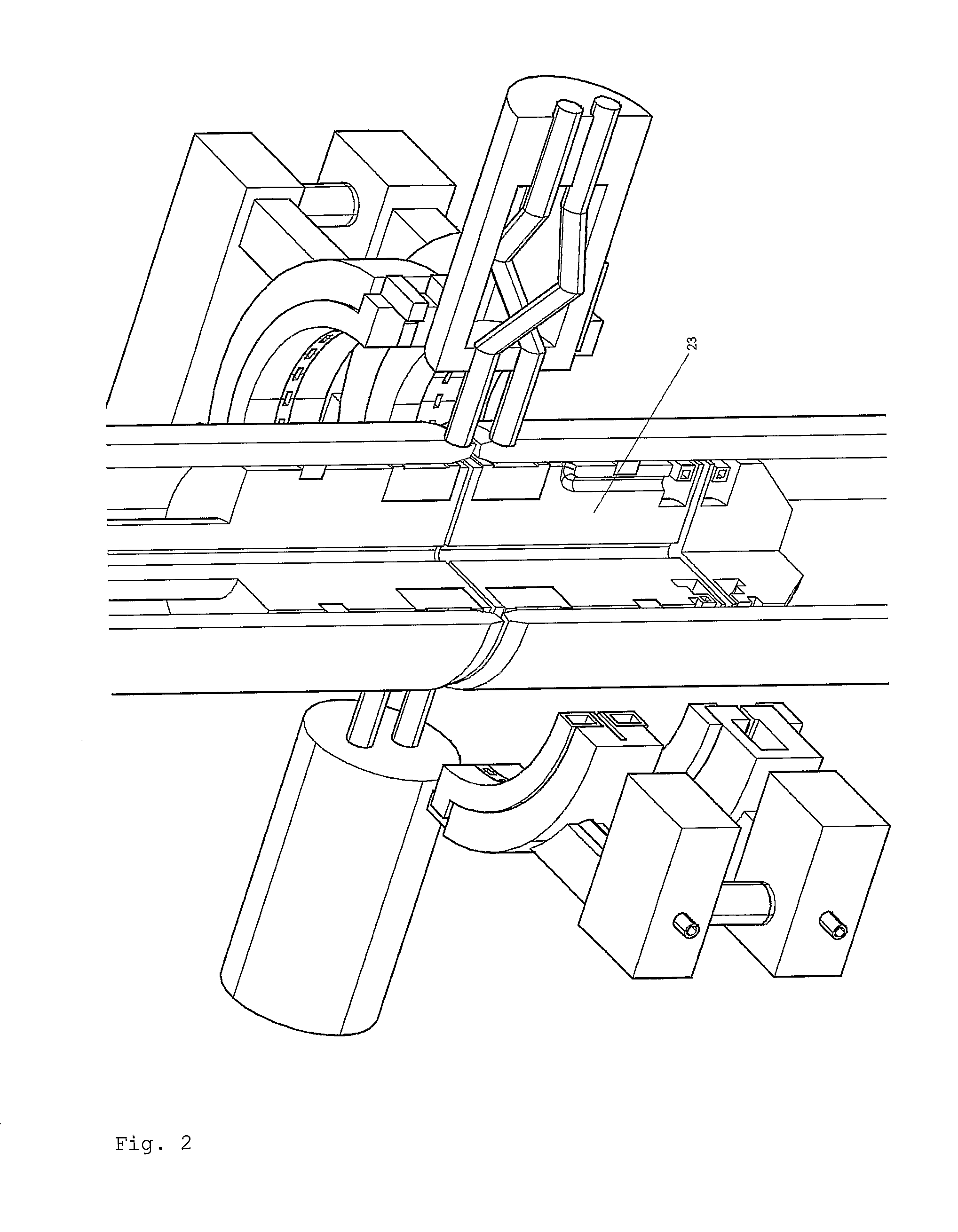Apparatuses For and Methods of Forge Welding Elongated Articles with Electrodes and an Induction Coil
- Summary
- Abstract
- Description
- Claims
- Application Information
AI Technical Summary
Benefits of technology
Problems solved by technology
Method used
Image
Examples
Embodiment Construction
[0025]The induction heating arrangement may be realized in at least two different embodiments:[0026]1. A two-part coil that shares the transformer supplying the contact assemblies. This is illustrated in FIGS. 1-4. Here, the coil part 3a is equipped with contact pads 12, 13. During induction heating, the contact assembly 8 is pushed towards the contact pads 12, 13. The other contact assembly 9 is pushed towards corresponding contact pads on the other coil half 3b. It is a large benefit to avoid a dedicated transformer for feeding the coil, as this component is very bulky and takes up a lot of room. It is also expensive.[0027]2. A four-part coil supplied with current from the transformer(s) supplying the contact assemblies, in which coil segments are fastened to the tips of the contacts. In this case, contact gaps 14, 15 are arranged in the coil. The contact gaps are closed before current is applied. This embodiment is illustrated in FIG. 5.
[0028]FIG. 1-4 illustrates a welding sequen...
PUM
| Property | Measurement | Unit |
|---|---|---|
| Time | aaaaa | aaaaa |
Abstract
Description
Claims
Application Information
 Login to View More
Login to View More - R&D
- Intellectual Property
- Life Sciences
- Materials
- Tech Scout
- Unparalleled Data Quality
- Higher Quality Content
- 60% Fewer Hallucinations
Browse by: Latest US Patents, China's latest patents, Technical Efficacy Thesaurus, Application Domain, Technology Topic, Popular Technical Reports.
© 2025 PatSnap. All rights reserved.Legal|Privacy policy|Modern Slavery Act Transparency Statement|Sitemap|About US| Contact US: help@patsnap.com



